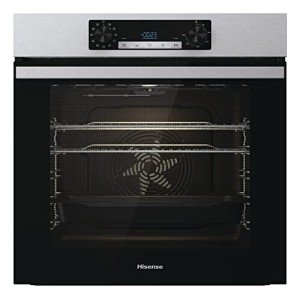You’ll Never Guess This Oven For Kitchen’s Tricks
Choosing the Right Oven for Your Kitchen: A Comprehensive Guide
Ovens have actually been a foundation of culinary undertakings for centuries, offering a necessary home appliance for both amateur cooks and expert chefs alike. As modern-day kitchen areas progress, so too do the kinds of ovens offered, each created to meet the diverse needs of cooking lovers. The following guide offers a detailed introduction of various oven types, their functions, and factors to consider to remember when selecting the ideal oven for Kitchen for your kitchen.
Types of Ovens
When considering an oven for your kitchen, it is necessary to understand the various types available. Each kind of oven has distinct characteristics that can influence cooking methods and total kitchen performance.
1. Conventional Ovens
Traditional ovens are the many fundamental type, typically discovered in homes worldwide. They normally utilize either gas or electric power and offer a straightforward cooking technique.
- Gas Ovens: Utilize natural gas or gas, offering instant heat and excellent temperature control.
- Electric Ovens: Use electric coils or a heating aspect, typically providing more even heat distribution.
2. Convection Ovens
Stove are created with a built-in fan that flows hot air around the food, leading to faster cooking times and more even results.
- Advantages:
- Reduced cooking times (as much as 25% faster)
- Even baking and browning
- Downsides:
- May need modifications to recipes (lower temperature or shorter time)
3. Wall Ovens
Wall ovens are a popular choice in modern cooking areas, as they can be installed at eye level, conserving counter space and increasing ease of access.
- Single Wall Ovens: Ideal for smaller sized kitchens, ideal for daily cooking.
- Double Wall Ovens: Increase capacity for large meals and multiple dishes.
4. Range Ovens
Range ovens integrate both a cooking range (with burners) and an oven, providing a compact option for kitchen areas with limited space.
- Freestanding Ranges: Standalone units that can suit any kitchen layout.
- Slide-in Ranges: Designed to fit snugly in between cabinets for a more integrated look.
5. Steam Ovens
Steam ovens use steam instead of dry heat, maintaining wetness and nutrients in food.
- Benefits:
- Healthier cooking option
- Ideal for baking bread and cooking veggies
- Considerations:
- May need extra actions for specific dishes
Key Features to Consider
When choosing an oven, consider the following functions that can enhance cooking experiences:

| Feature | Description |
|---|---|
| Size | Guarantee it fits your kitchen area and satisfies your cooking requires. |
| Self-Cleaning | Makes maintenance much easier, eliminating the requirement for manual scrubbing. |
| Smart Technology | Ovens with Wi-Fi connection can simplify cooking through apps. |
| Temperature Range | A wider range can improve cooking versatility. |
| Security Features | Functions such as auto shut-off can enhance kitchen safety. |
Tips for Choosing the Right Oven
Choosing the right oven can often be a complicated task. Here are several pointers to simplify the procedure:
-
Identify Your Cooking Habits: Consider how frequently you prepare and the types of meals you prepare. For example, avid bakers may prefer a stove for even baking, while those who prepare roasts may lean towards a conventional oven.
-
Procedure Your Space: Before purchasing, measure the location where the oven will be put to guarantee it fits comfortably with your kitchen style.
-
Consider Your Budget: Ovens range commonly in price. It is essential to set a budget and consider the long-lasting worth of the home appliance.
-
Read Reviews: Online evaluations can supply insight into a design’s performance and reliability gradually.
-
Inspect Energy Ratings: Energy-efficient models can conserve you money on utility expenses in the long run.
Maintenance and Care
To maximize the life expectancy of your oven, correct maintenance is key. Follow these easy actions:
- Regular Cleaning: Make cleaning a habit after each usage, and utilize self-cleaning functions when offered.
- Inspect Seals: Ensure that the door seals securely; this prevents heat loss during cooking.
- Calibration: Periodically check the oven temperature for precision. An oven thermometer can aid with this.
- Professional Servicing: Schedule regular upkeep talk to an expert to ensure the appliance operates effectively.
Frequently asked questions
What is the best type of oven for a small kitchen?
For little kitchens, wall ovens or compact range ovens are exceptional alternatives as they take up less area and can be installed to fit into readily available kitchen cabinetry.
How do I keep a gas oven?
Routinely examine the burners for clogs and ensure that the oven’s interior is cleaned up to prevent accumulation from spills and splatters.
Can I bake and broil in the exact same oven?
Yes, many modern-day ovens enable both functions. Check the user manual for specific guidelines on running your oven.
What should I do if my oven isn’t heating properly?
Initially, check if it’s appropriately plugged in or if the gas is streaming. If issues persist, speak with a technician to diagnose possible issues.
Is it worth purchasing a wise oven?
If cooking convenience and the most recent technology interest you, investing in a wise oven can be beneficial, as they use a variety of improved cooking features.
Picking the ideal oven for your kitchen is crucial to both the functionality and enjoyment of your cooking experience. By thinking about the numerous types of ovens, vital features, and maintenance pointers, customers can make an educated choice that fulfills their cooking requirements and preferences. Whether you are a casual cook or an enthusiast, the right oven can substantially raise your culinary experiences.

